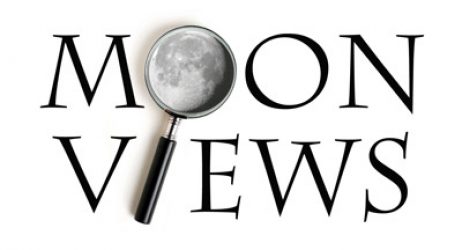
This medium resolution image, frame 2127_M, was taken by Lunar Orbiter 2 on 22 November 1966 at 20:18:25 GMT LPI reference Images: [Medium] [Large]

Official website of the Lunar Orbiter Image Recovery Project (LOIRP)

This medium resolution image, frame 2127_M, was taken by Lunar Orbiter 2 on 22 November 1966 at 20:18:25 GMT LPI reference Images: [Medium] [Large]

This high resolution image, subframe 2128_H2, was taken by Lunar Orbiter 2 on 22 November 1966 at 20:18:27 GMT. Two areas containing craters filled with boulders have been highlighted. Enlarged versions of these locations are shown below. With a resolution of approximately 1 meter/pixel, the smallest boulders visible are several meters across.
LPI reference Images: [Medium] [Large]

This high resolution image, subframe 2128_H1, was taken by Lunar Orbiter 2 on 22 November 1966 at 20:18:27 GMT LPI reference Images: [Medium] [Large]

This high resolution image, subframe 2128_H2, was taken by Lunar Orbiter 2 on 22 November 1966 at 20:18:27 GMT LPI reference Images: [Medium] [Large]

This high resolution image, subframe 2128_H3, was taken by Lunar Orbiter 2 on 22 November 1966 at 20:18:27 GMT LPI reference Images: [Medium] [Large]
 From Obsolete Technology, New Science, NOVA, PBS
From Obsolete Technology, New Science, NOVA, PBS
“Today, an engineer named Dennis Wingo is working to resurrect that data. He co-leads the Lunar Orbiter Image Recovery Project–which, as the name implies, is working to pry all that old data off of the tapes. So far, he’s been successful, thanks to a combination of skill and pure luck. Wingo’s team located one of the only NASA computer tape drives left in existence, and carefully restored it to its former glory in order to digitize the old tapes onto modern hard drives.”
“We took 40 year old data tapes, tape drives that had been in a garage for 30 years, found elderly engineers, and reverse-engineered ancient technology to provide enhanced imagery from the five Lunar Orbiter missions in a fashion – and resolution – inconceivable at the time that the missions were conducted.”
“Keith Cowing talks about the kind of hacks made famous by the Apollo 13 mission, instances where the crew had to improvise using materials at hand. He discusses the following: Skylab Rescue – the umbrella used to replace solar insulation and boating tools bought at a local marina; Syncom Rescue – tools made out of plastic and duct tape; Apollo 13 CO2 removal, use of LEM engine, etc.; Apollo lunar rover fender repair; STS-120 EVA solar panel repair, and ISS camera tracker made from a power tool. Cowing also talks about some of his own projects including the greenhouse he designed and built on Devon Island (and some serious hacks) near the North Pole. Currently, he’s working in partnership with NASA Ames to restore a 1960’s era Titan I ICBM & convert it for educational use.”
More information: moonviews.com, nasahackerspace.org

This high resolution image, subframe 2151_H1, was taken by Lunar Orbiter 2 on 23 November 1966 at 13:36:34 GMT LPI reference Images: [Medium] [Large]

This high resolution image, subframe 2151_H2, was taken by Lunar Orbiter 2 on 23 November 1966 at 13:36:34 GMT LPI reference Images: [Medium] [Large]

This high resolution image, subframe 2151_H3, was taken by Lunar Orbiter 2 on 23 November 1966 at 13:36:34 GMT LPI reference Images: [Medium] [Large]

This high resolution image, subframe 2133_H1, was taken by Lunar Orbiter 2 on 23 November 1966 at 23:47:22 GMT LPI reference Images: [Medium] [Large]